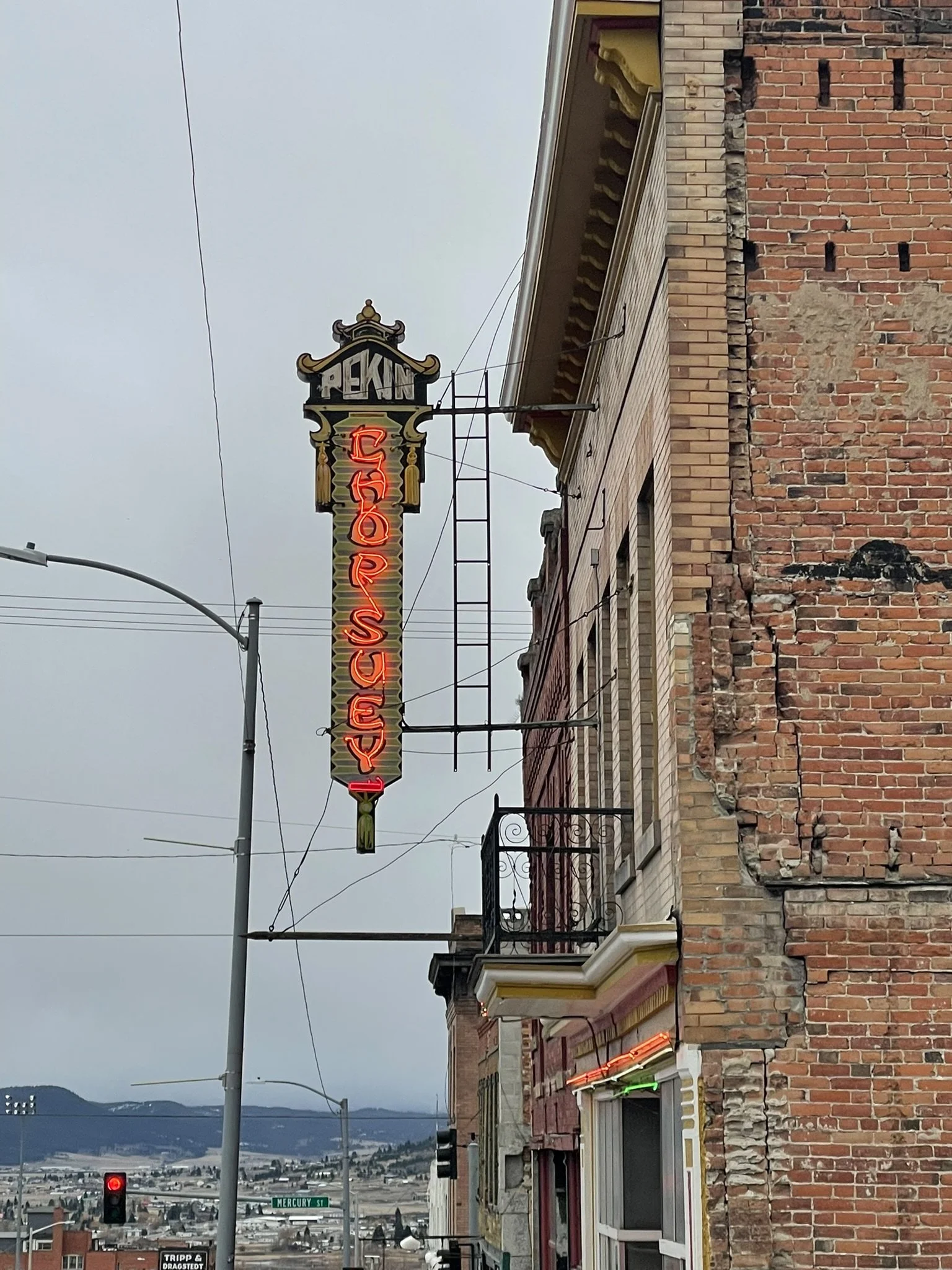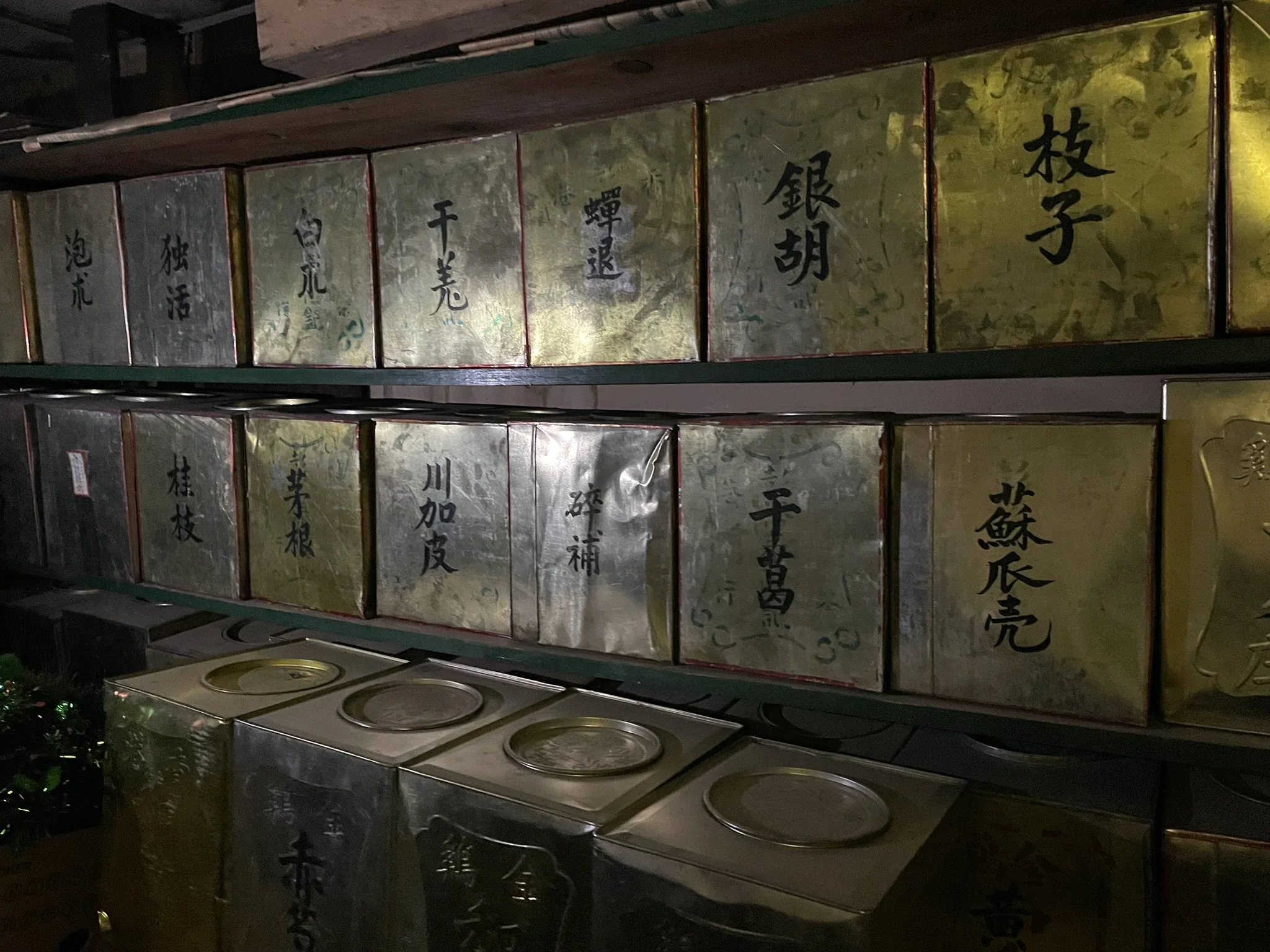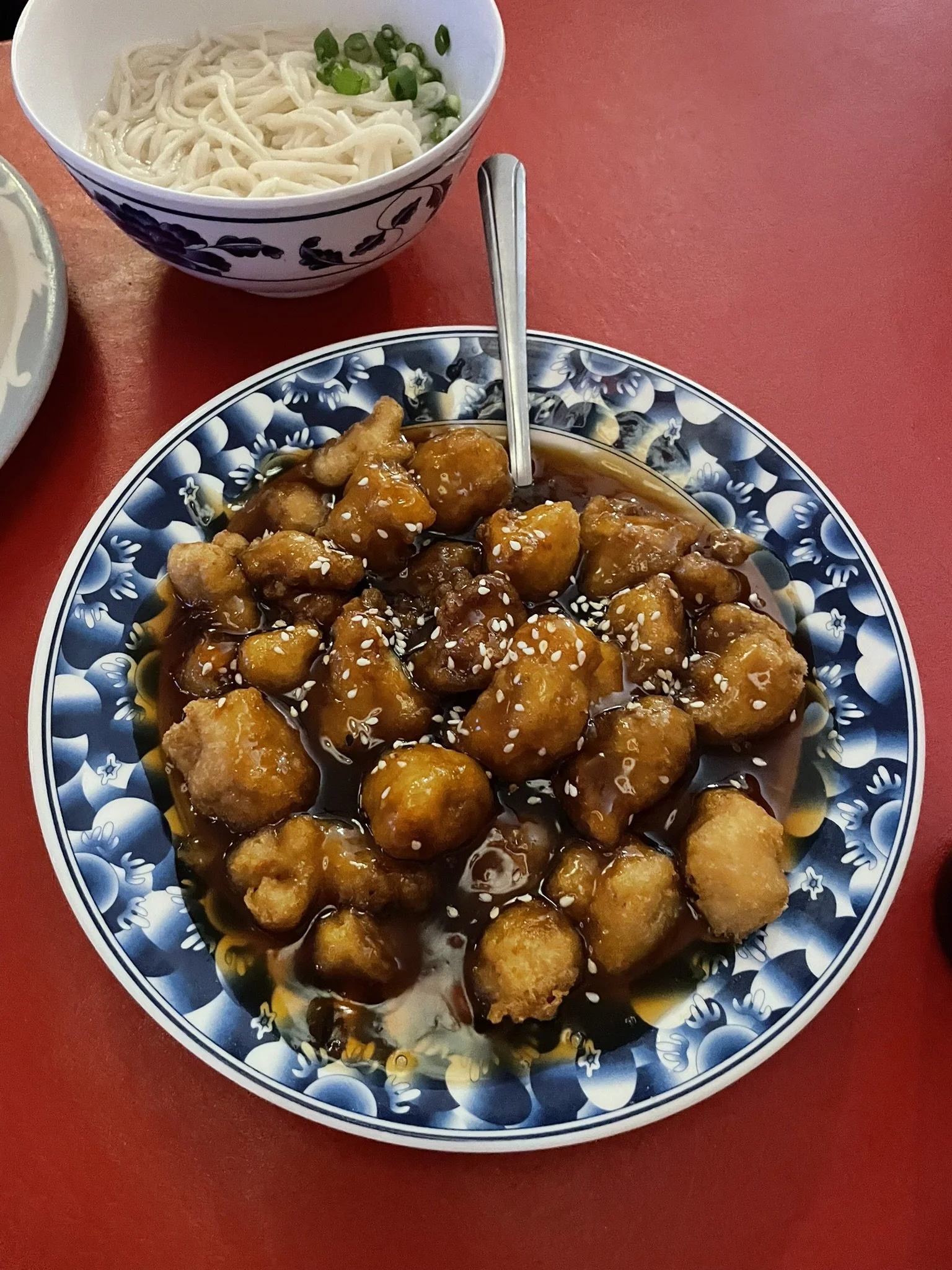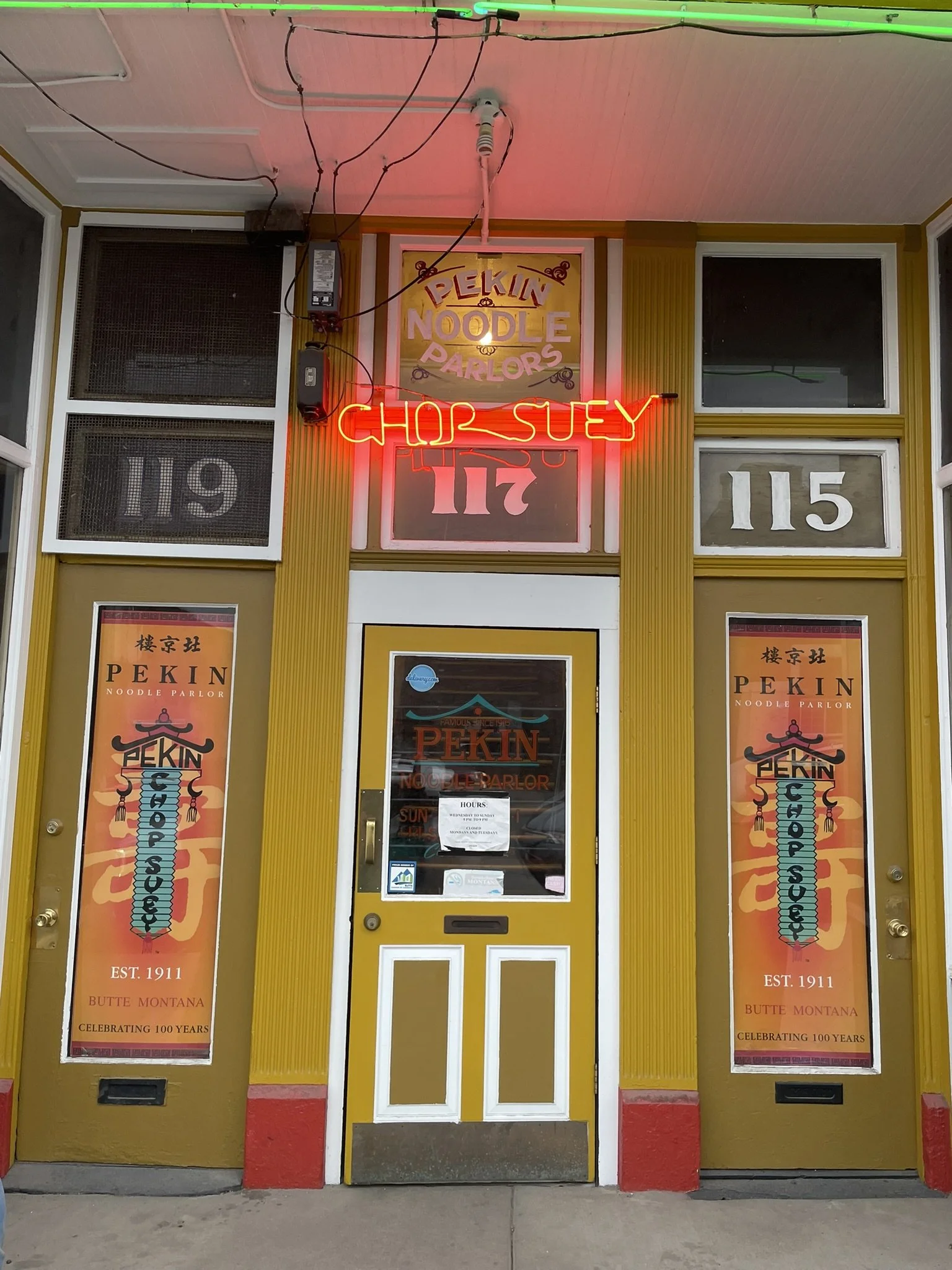PEKIN NOODLE
MONTANA’S LAST BEST CHINESE RESTAURANT
In unassuming Butte, America, there lies a hidden gem. Vestiges of a once-booming Chinatown remain on the steep streets of Main and Mercury in uptown Butte, formerly Montana’s largest city. Immigrants worldwide traveled to Butte for mining and railroad opportunities in the 1860s, and about a quarter of Butte’s population was Chinese by 1870. Today, a glance down Butte’s China Alley reveals a lone Coca-Cola sign from the 1960s, hanging over the back door of one of the two last Chinese businesses open in Butte: Pekin Noodle Parlor, the oldest continuously operating, family-run Chinese restaurant in the United States.
Opened in 1911 under the name Pekin Café and Lounge, the Pekin Noodle Parlor is owned and operated by Jerry Tam, the great-great-great-grandson of the original owner, Tam Kwong Yee. The restaurant is located on the second floor of a historic brick building at 117 South Main Street, built in 1909 by the Freemasons. Yee’s grandson, Ding Kuen Tam, came to the States from Guangzhou, China, in 1947 and purchased the establishment from Yee and his business partner, Hum Yow. Ding Kuen Tam became known as Danny Wong, and he and his wife Sharon operated the Pekin for more than six decades until their son Jerry took over in 2020.
When Yee arrived in the States in the 1860s, this country had not yet passed the Chinese Exclusion Act, which banned Chinese immigrants from coming into the country to work manual labor jobs. This would occur in 1882 amidst widespread racism and discrimination, and the Act was not overturned until 1943 when the United States and China were World War II allies against Japan.
Due to the so-called “lo mein loophole,” which permitted restaurant industry workers to enter the States, many Chinese immigrants circumvented this law and persevered.
In Yee’s and Yow’s case, they ran a mercantile and herbal medicine shop on the first floor, installed the noodle parlor upstairs, and operated an illegal gaming parlor in the basement. “The history of the building is remarkable,” Tam says. “At one time, it was built out to include a laundry, mercantile, lodging for my family, and an apothecary – my great-great-great grandfather Tam was an herbalist with a degree from Hong Kong University.” Incredibly, many of these dried herbs still sit in large wooden drawers on the main level of the Pekin building, which holds so many Chinese antiques that it has great potential for a museum of its own.
The lore about the place, especially the basement level, is endless. “Imagine over 500 miners down here, gambling and partying,” Tam says, gesturing to the tight quarters that still hold a casino cage and gritty roulette wheels. “Two barrels of opium were discovered in one of these basement rooms in the 1980s.” Locals say the building once harbored a secret house of prostitution (probable) and that Tam’s father, Danny Wong, would throw customers trying to dine and dash into the “Pekin jail” by brandishing a bayonet and locking the doors until they paid their bill or washed some dishes, their choice (true).
Wong was the face of the Pekin for over sixty years. When he passed in 2020, the entire community mourned his loss. In 2021, Butte officially declared July 20 as “Danny Wong Day” to commemorate his unmatched hospitality, kindness, and work ethic. “My dad was also a bit of a comedian,” says Tam. “He always said that our restaurant is called the Pekin instead of the Peking (the former Cantonese name of present-day Beijing) because the G wouldn’t fit on the sign.”
And that is where the adventure of dining at the Pekin begins – when patrons spy the restaurant’s iconic neon sign hanging outside the front entrance. Glowing red letters announce “PEKIN – CHOP SUEY,” standing out against the ancient brick exterior walls. I was fortunate enough to find myself gazing up at the legendary sign not long ago, having corralled a group of friends to embark on this eating experience with me. After clearing the threshold of the hot-mustard-colored door, we ascended the steps to the second level, where a sign reading “Lounge” (another amazing time capsule that deserves its own story) indicated that the parlor was on the left.
Upon entering the restaurant, a long row of curtained booths in what Tam calls “carnival orange” caught our eye. Private dining spaces, or what legend claims is a former row of brothel stalls? Either way, there was no mistaking the fact that we were in a Chinese restaurant now – the smell of ginger mingling with soy sauce drifted beneath splashy Chinese lanterns and around tables set with chopsticks.
Dinner began with icy bottles of Lucky Buddha, a light Chinese lager from Qingdao Lake that soothed our tastebuds after a flurry of appetizers—barbequed pork with hard-boiled eggs and hot mustard, foil chicken, egg drop soup, fried pork dumplings, crab rangoons, and sweet and sour wontons. Our enthusiastic rounds of beer quickly dispelled any myth that women aren’t beer lovers.
Then came the main event: shrimp fried rice, chicken chop suey, broccoli beef—and just when we thought we were finished, even more classics arrived: chicken chow mein, pork fried rice, egg foo young, plain noodles, and sweet and sour chicken, all paired with hot oolong tea and fortune cookies. “Someone can read your mind,” mine said. Good thing, because all I was thinking was: life without Chinese vessels of salt, carbs, and sugar just isn’t for me.
“Our food is a combination of Szechuan, Cantonese, and Burmese,” says Tam. “It’s basically poor man’s food – meaning, what’s left over. Chop suey was created in America, and catered toward miners and late-night workers because it literally translates to bits and pieces of leftovers. Chinese cooks would take whatever was left over at the end of the night – often celery, onions, bean sprouts – mix it in its own vegetable gravy, add chicken or pork, and serve it over chow mein noodles.”
Around the turn of the twentieth century, imported Chinese foods coming off ships in San Francisco and Seattle were mainly dry and non-perishable. Fresh, authentic ingredients like water chestnuts, straw mushrooms, snow peas, and ginger, found in traditional Chinese food would not be available in Montana for a good many decades, so the “chow-chows,” as they were called, had to make do with what they had and with what Chinese cooks knew. “Vinegar and soy sauce came along with the dry goods,” Tam explains, “so that’s how our food was designated Chinese American. I always say that our food is simple – ‘it’s brown, hot, and plenty of it!’” (name that movie quote).
Despite this description, the Pekin Noodle Parlor was awarded the James Beard Foundation’s American Classics Award in 2023, an honor that Tam doesn’t take lightly. “This cements us in history, which is such an honor,” says Tam. “We serve simple comfort food, and that’s the way my father always wanted it. So, to be acknowledged for that is huge.”
It is indeed huge; yet it’s no surprise that the Pekin has received the recognition that it has. The restaurant’s history, culture, and relationship with its community make it something akin to an institution – it’s a significant piece of Butte’s heart and soul and of Chinese history. Tam says it’s an example of the American Dream. As one longtime customer and Butte resident put it, “It’s important to understand the role of Chinese Americans in the western United States, and the Pekin is emblematic of Chinese hospitality and the way it creates a welcome space by building relationships over generations. The Tam family and their restaurant are extremely special to our community.”




